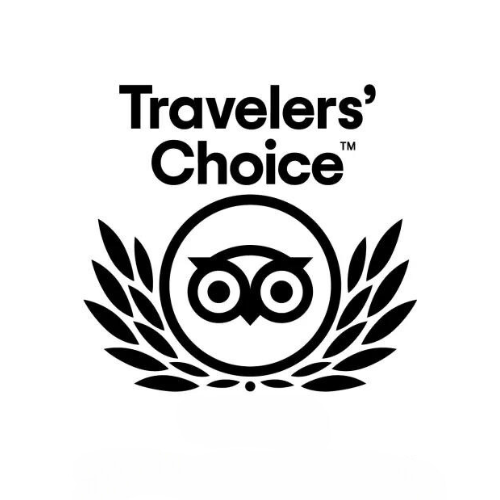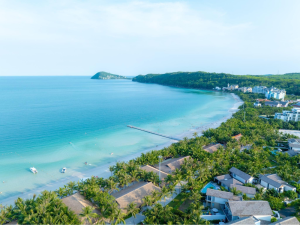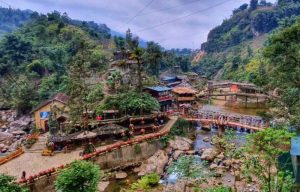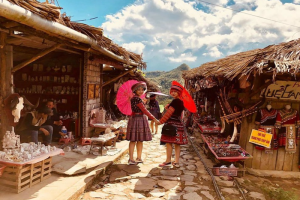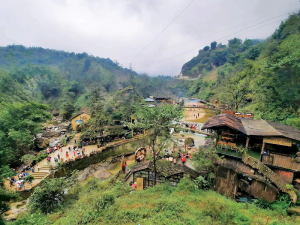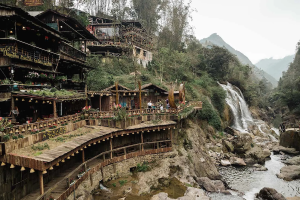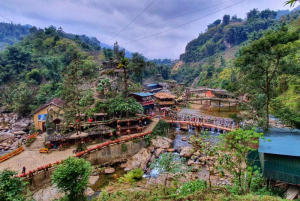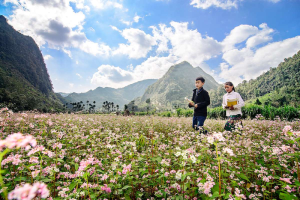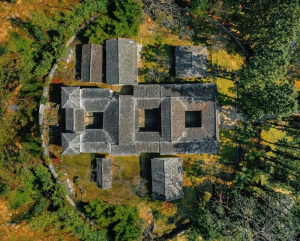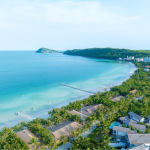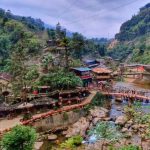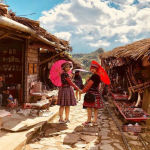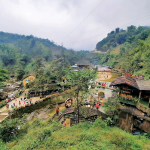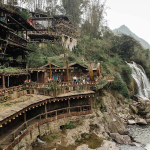Mu Cang Chai or Sapa – both stand as prime candidates for nature enthusiasts and culture seekers traveling to Vietnam. Situated in the northern part, these hill towns are famous for their picturesque rice terraces, old villages, and fresh mountain air. Though they share some similarities, they also vary in terms of accessibility, tourism development, and local experiences. Before getting into specific details, let’s see why this comparison is necessary for your next trip.
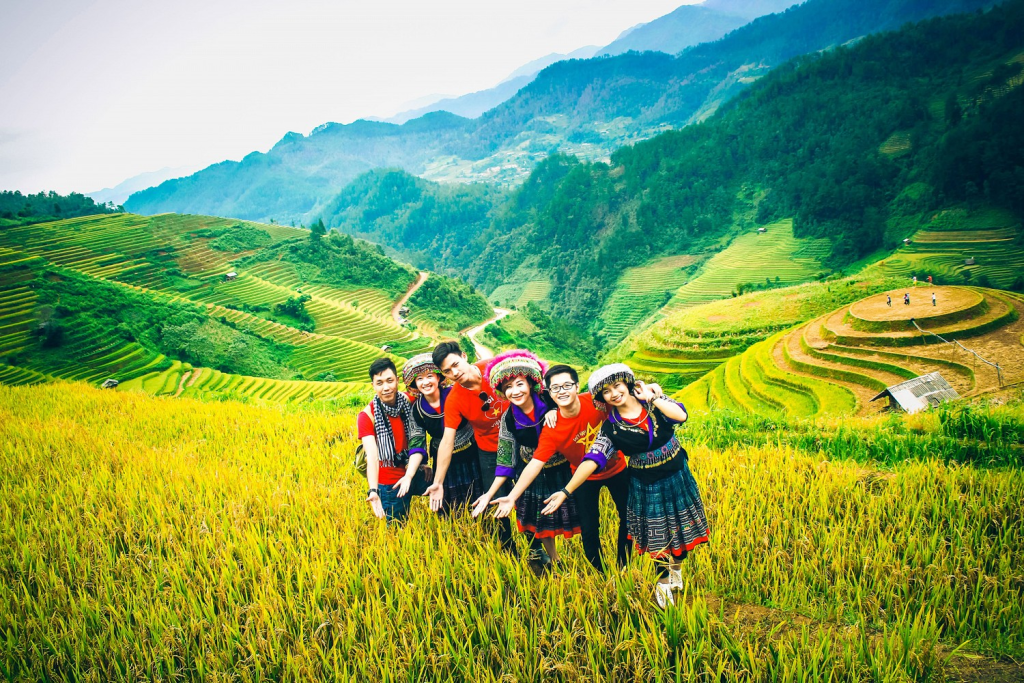
Mu Cang Chai or Sapa – Which one should you visit?
Choosing Mu Cang Chai or Sapa comes down to what type of travel experience you’re looking for – from stunning landscapes and cultural richness to price, comfort, and adventure activities. Let’s take a look at how these two places stack up in some important categories.
Landscape and scenery comparison
Mu Cang Chai is famous for its breathtaking terraced rice fields carved into the sides of towering mountains in communes like La Pan Tan, Che Cu Nha, and De Xu Phinh. The terraces span over 2,200 hectares, with about 500 hectares being National Heritage. During harvest time (late September to early October), terraces are golden, producing the surreal impression of a “sea of silk” at sunrise and sunset. During planting time (May–June), flooded terraces reflect the sky, forming sparkling mosaics that excite photographers.
By comparison, Sapa is geologically more varied: mist-shrouded valleys, conical rice terraces, waterfalls, and the massive peak of Fansipan – the “Roof of Indochina” at 3,147m. Sapa is situated in the biodiverse Hoang Lien Son mountain range and national park, with rare flora and fauna across changing microclimates.
Cultural experiences in Mu Cang Chai and Sapa
The Black Hmong are the dominant ethnic group in Mu Cang Chai and are intimately engaged in the maintenance of the rice terraces. La Pan Tan and Che Cu Nha villages offer homestays and interactive culture, such as rice planting and harvesting festivals, and traditional weaving. Seasonal festivals vary from the “Terraced Field Festival” in September to the Water‑Pouring Season in May–June, with folk music, paragliding over terraces, and communal rituals that glorify agrarian life.
Sapa, by contrast, is a mosaic of cultures. It is home to several ethnic groups – Hmong, Red Dao, Tay, Giay – reflected in local attire, handicrafts, and ways of life. Guided tours of Cat Cat, Lao Chai, Ta Van, and Ta Phin villages, as well as occasional markets like Bac Ha where locals trade livestock, handmade fabrics, and ethnic foods, foster cultural exchange. In Sapa, visitors can learn indigo dyeing from Dao artisans, sample corn wine, and find embroidered textiles in local workshops – a blend of traditional craft and accessible tourism.
Activities and things to do
Mu Cang Chai offers a packed program of activities for nature enthusiasts and adventure travelers:
- Trekking and hiking: Trails through La Pan Tan, Che Cu Nha, De Xu Phinh, and Khau Pha Pass offer panoramic views over terraced fields and nearby villages. Tours range from easy one-day walks ($18–$60) to more extensive multi‑day treks such as Ta Chi Nhu Peak or Nam Kang Ho Tao ($60–$140) with knowledgeable local guides.
- Photography tours: Known as a photographer’s paradise, especially at sunrise and sunset during harvesting time, with iconic viewpoints like Mam Xoi Hill and Dinosaur Spine. Local guides lead you to hidden spots and offer photography tips.
- Cycling and motorbike excursions: Rent a bike (~150,000–300,000 VND/day) for scenic loops around rice terrace roads, or take a guided motorbike tour across Khau Pha Pass for panoramic views.
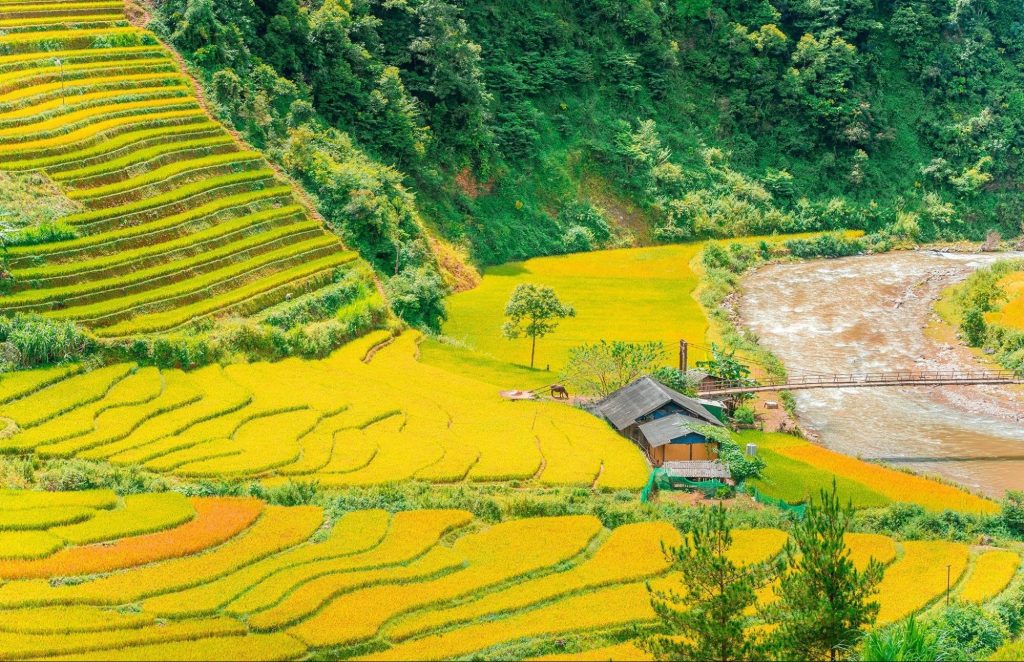
- Cultural interaction: Join planting or harvesting of rice in May–June and September–October, engage with local farmers, visit weaving or handicrafts, or attend festivals like the Terraced Field Festival or Water‑Pouring Ceremony.
- Relaxation spots: Visit Tram Tau hot springs for a dip, and attempt Mo Waterfall or bamboo forests near local villages for relaxing breaks amidst treks.
- Local markets: Sunday markets (for instance, Nghia Lo, Mu Cang Chai town) showcase traditional textiles, fresh produce, and communal energy – a great way to shop and gain insight into local life.
Sapa, by contrast, has a wider range of activities suited to both adventure seekers and leisure travelers:
- Mount Fansipan (“Roof of Indochina”): Hike the challenging trails or take the modern cable car to reach the 3,143m peak for breathtaking views of clouds, valleys, and mountains.
- Village trekking: Popular trails connect villages like Cat Cat, Ta Van, and Lao Chai, where you can interact with H’mong, Dao, and Tay ethnic minorities. Homestay experiences are widely available.
- Scenic train and cable car rides: The Muong Hoa funicular and Fansipan cable car make Sapa’s landscapes accessible even to non-hikers, offering panoramic rides over rice fields and valleys.
- Waterfalls and nature escapes: Silver Waterfall, Love Waterfall, and Ham Rong Mountain provide refreshing getaways with lush scenery.
- Shopping and food experiences: Sapa town hosts a vibrant night market and food stalls serving grilled skewers, “thắng cố” (traditional horse meat soup), and herbal baths for relaxation.
- Festivals and culture: Seasonal festivals like Gau Tao (H’mong new year celebration) showcase traditional music, dancing, and costumes.
Cost comparison for a trip to Mu Cang Chai or Sapa
When deciding between Mu Cang Chai or Sapa, cost is often a key factor for travelers. While both destinations are relatively affordable compared to major tourist hubs, the expenses can vary significantly depending on travel style, season, and comfort preferences.
Mu Cang Chai (approximate daily costs per person)
For those travelers who enjoy a more rural, low-budget atmosphere, Mu Cang Chai is a great option. Most of the expenses are centered around homestays, local food, and outdoor activities.
- Accommodation: Basic homestays from ~150,000 VND/night; eco-lodges up to 1,200,000 VND for more comfort ($16–50/night abroad).
- Meals: Street food or meals at homestays 20,000–150,000 VND/meal (~$1–6); specialty foods like sticky rice and barbecue fish are more (~100k–300k VND).
- Activities & tours: One‑day guided hikes from ~$18–22 (400k–500k VND), longer hikes $60–$140 depending on length and route.
- Motorbike rental ~150k–300k VND/day.
- Tour packages: A 3‑day/2‑night package with transport, meals, homestay, and guided activities will be 2.5 million to 5 million VND (~$110–225) or more, depending on comfort level.
Sapa (indicative budget snapshot)
Sapa has more developed infrastructure and broader pricing brackets, from backpacker hostels to upmarket resorts. The cost will depend on the level of comfort and convenience that you desire.
- Accommodation: Hostels and budget hotels 200k–400k VND ($8–17) per night; more for mid‑range to luxury resorts, depending on amenities.
- Transport: Overnight train to Lao Cai and local transfer ~15–20 USD; bus options are similar.
- Activities: Fansipan round-trip cable car 800,000 VND ($34). Guided treks, village visits, waterfalls, market trips, and trekking packages range from ~$25 to $100+, depending on the duration and inclusions.
- Example 5‑day budget: Transport (~2.1M VND), accommodation (~1.2M VND), meals (~1.5M VND), activities (~1.0M VND), extras (~0.5M VND) – total 6.3 million VND ($270) per person for independent travel.
Who should choose Mu Cang Chai or Sapa
This section helps travelers identify which destination best matches their preferences, pace, and priorities.
Ideal travelers for Mu Cang Chai (off‑the‑beaten‑path, adventure seekers)
Mu Cang Chai is perfect for anyone who craves isolated tranquility and rough natural beauty. The region attracts photographers, solo travelers, and individuals who prefer unrestricted cultural experiences. It’s less crowded and commercialized, even in high (harvest) season.
Travelers who enjoy physical adventures like trekking through rice terraces, motorbiking over mountain passes, and sleeping in simple homestays will be in their element here. Local guides are typically arranged through homestays, and homespun encounters with Hmong communities add to the appeal.
Photographers love Mu Cang Chai, especially in September–October, when golden terraces under dramatic skies provide once-in-a-lifetime shots.
Ideal travelers for Sapa (easier access, more facilities)
For visitors who want several experiences with reliable infrastructure, Sapa is more suitable. It has a complete range of accommodation from basic hostels to high-end resorts, bilingual guide services, cable car services to Fansipan, and a variety of cuisine and activities.
Sapa is ideal for families, Vietnam first-timers, and visitors who enjoy flexible options, cultural villages and markets, easy treks, and comfort without sacrificing scenery enjoyment.
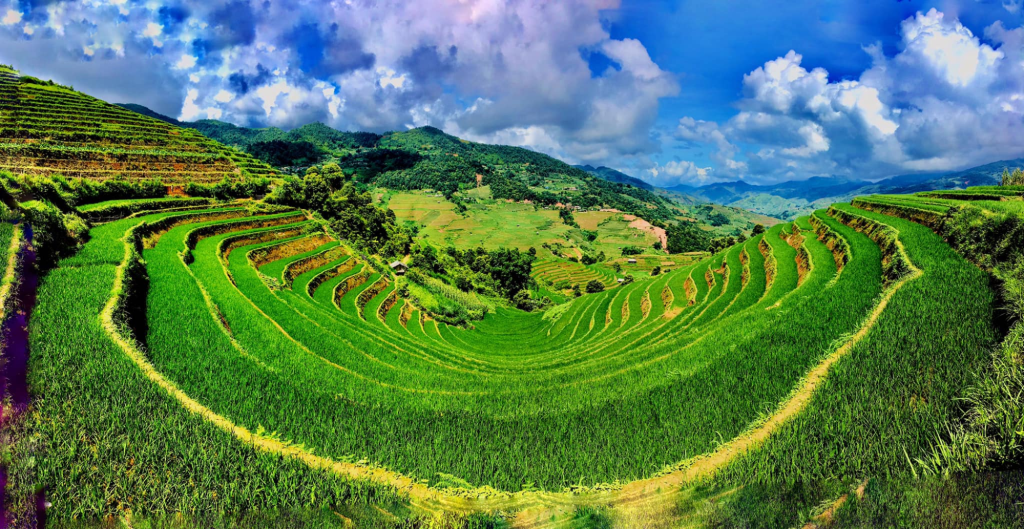
Recommendations for families, solo travelers, and photographers
Let’s review some recommendations below for different types of travelers:
- Families & solo travelers: Travelers with teenagers or older kids, or those traveling alone, might opt for Sapa – more healthcare facilities, greater dining variety, and easy transport.
- Photographers & slow travelers: Mu Cang Chai is a star – its empty lanes, minimal crowds, and almost ethereal environment allow photographers and contemplative travelers to soak in to their hearts’ content.
- Cultural explorers: Both destinations offer rich cultural exposure, albeit with different experiences. Mu Cang Chai offers a more concentrated rural experience with Hmong life, whilst Sapa exposes you to numerous ethnic minorities, bustling markets like Bac Ha, and easily accessible cultural tours.
When to choose both: Combined itinerary
If time permits, the ideal method of experiencing Vietnam’s highland contrast is to combine Sapa and Mu Cang Chai. Begin with the more accessible trails and cultural ease of Sapa, then move on to Mu Cang Chai via scenic Khau Pha Pass for its peaceful landscape and traditional Hmong hosts. This combination is the best of both worlds – exploration and variety in one trip.
FAQs about choosing between Mu Cang Chai and Sapa
Absolutely, you should not forget the FAQs section to gain more experience before starting your trip.
Can you visit both on one trip?
Sure thing. Most visitors combine them in one itinerary, starting in Sapa and then continuing to Mu Cang Chai, or vice versa. The two are approximately 140 km apart and take 3.5–6 hours by road, depending on your vehicle and weather. You can take a bus, minivan, private car, or even ride a motorbike through scenic routes like O Quy Ho Pass and Khau Pha Pass. This combination offers a beautiful contrast: Sapa’s diverse landscapes and cultural hubs, followed by Mu Cang Chai’s quieter, golden terraces and intimate village life.
Read more: Nui Coc Lake: Unique eco-tourism destination
Which is better for trekking?
That depends on your preference:
- Sapa: Offers a wide variety of trails, from easy valley walks to the multi-day trek to Fansipan (the highest peak in Indochina), with plenty of tour options and infrastructure.
- Mu Cang Chai: Best for adventurers who prefer remote, less touristy terrain. Trails wind through vast rice terraces and ethnic villages, with rugged ascents like Khau Pha Pass – ideal for immersive hikes and fewer crowds.
Which is less touristy?
Mu Cang Chai is less touristy and quieter than Sapa. While growing in popularity, it remains peaceful and authentic even during harvest season and offers a more intimate countryside experience. Sapa is more tourist-developed and gets more foreign tourists, especially on well-known market days and cable car stops.
Which is better for cultural immersion?
- Mu Cang Chai: Mainly inhabited by Hmong and Thai communities. Expect deep cultural immersion through homestays, participating in agrarian rituals (rice planting/harvest festivals), and observing traditional crafts in rural settings.
- Sapa: A cultural melting pot hosting Hmong, Dao, Tay, and Giay people. You can experience multiple ethnic groups, visit bustling markets (e.g., Bac Ha), join craft workshops, and explore village life with reliable guides.
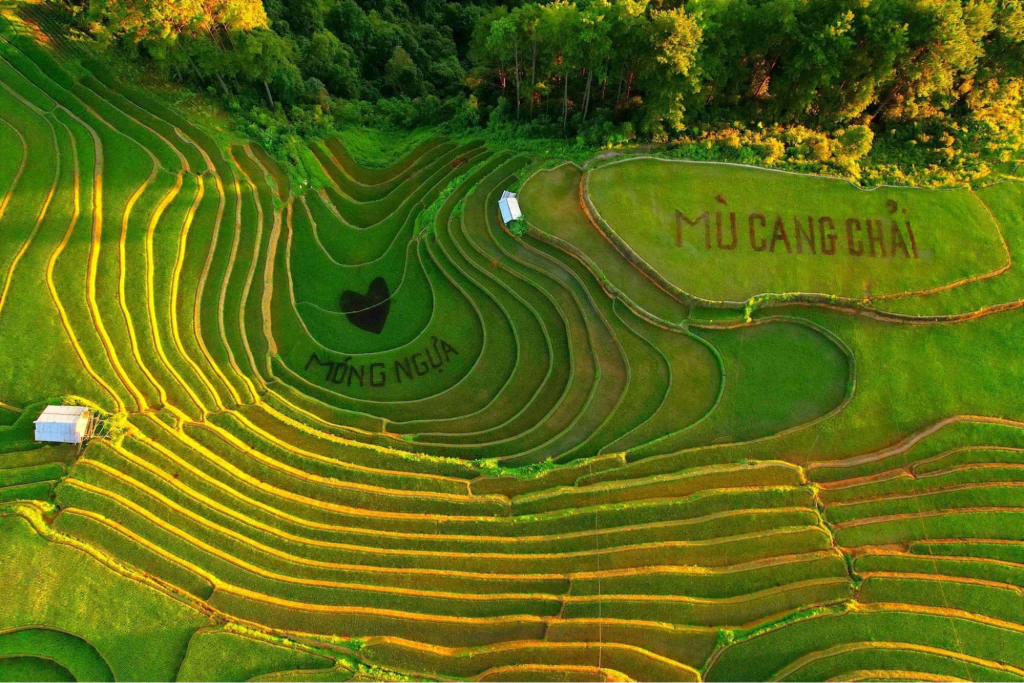
Which offers the most iconic scenery?
Both offer unforgettable landscapes but differ in focus:
- Mu Cang Chai: Known for its idyllic terraced rice fields, particularly stunning during planting (May–June) and harvest (September–October) seasons.
- Sapa: Features diverse topography – misty valleys, pine forests, waterfalls, and iconic views from Fansipan and O Quy Ho Pass.
When is the best time to visit each location?
- Mu Cang Chai: Peak beauty during September to early October (golden harvest) and May–June (flooded terraces reflecting skies).
- Sapa: Most pleasant in March–May (spring blooms) and September–November (cool days, autumn hues), with winter offering foggy charm and occasional snowfall.
Is one more budget‑friendly than the other?
Yes, Mu Cang Chai tends to be more economical. Homestays, meals, and trekking packages are cheaper due to less tourism infrastructure and simpler services. Sapa offers a wider range of accommodation, varied tour options, and tourist amenities – often at higher prices.
Can’t decide between Mu Cang Chai or Sapa? Let Lily’s Travel help you choose, and experience both the hidden gems and famous highlights. As one of the top-rated travel agencies in Hanoi, we specialize in customized Northern Vietnam adventures that blend culture, nature, and comfort. Start planning your personalized trip now!
Mu Cang Chai or Sapa – no matter which one you choose, you’ll find yourself immersed in Northern Vietnam’s rich heritage and breathtaking landscapes. Sapa may be better for comfort and accessibility, while Mu Cang Chai offers peaceful solitude and raw cultural encounters. Pick the path that best suits your travel goals.
Read more: Ghenh Che Lake: A picturesque scenic spot of Thai Nguyen province

